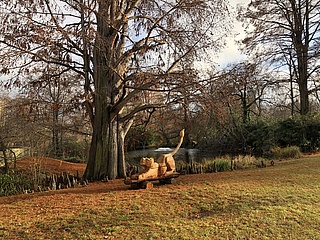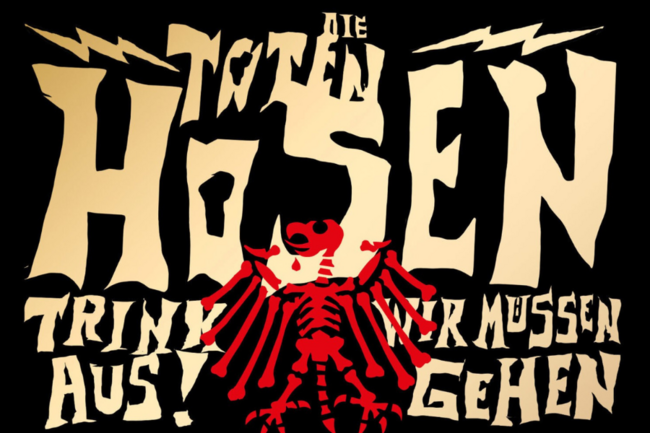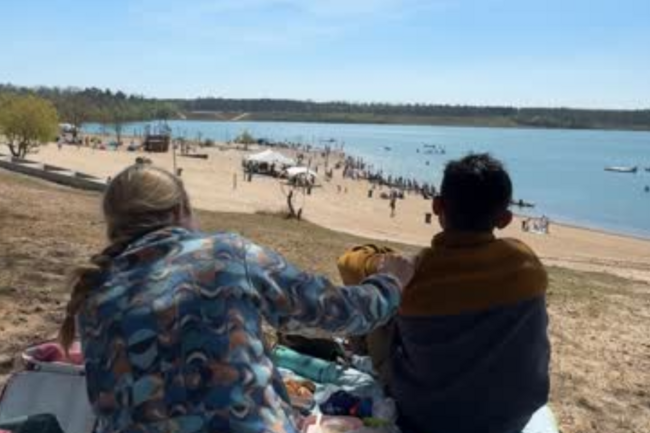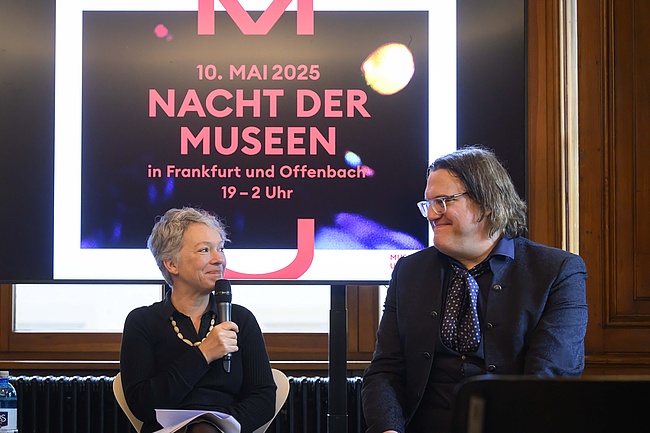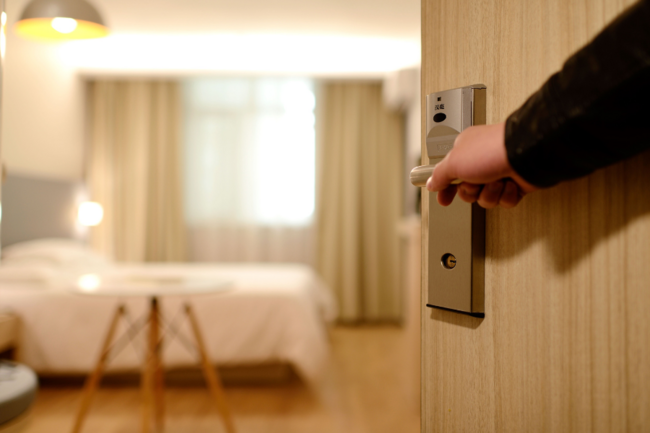The Frankfurt Zoo is currently inviting visitors not only to observe live animals, but also six animal-shaped wooden sculptures designed by students of the Design Sculpture Department of the HAWK University of Applied Sciences and Arts in Hildesheim. The wooden figures represent animals that live in the zoo and have a deeper purpose than just being something for the eye. They are meant to inspire, to provoke thought and to comprehend in a double sense.
The 'Rhinoceros without Horn', for example, impresses with its size and sculptural presence. It is beautiful, but with its sawed-off horn stumps it points to the problem of cruel poaching that brings all remaining rhino species to the brink of extinction. Much more light-footed are the two ostrich heads, which watch the zoo visitors from a high vantage point and seem to be talking about them. Within sight of the two giraffes BINE and SHUJAA, a wooden sculpture invites visitors to do something they rarely have the opportunity to do, namely to explore a giraffe's head with their hands at their leisure. The zoo has also found space for a stretching lioness, an elegant fossa and a happily striding anteater - all of which can be found near their real conspecifics.
About the work of the students is also pleased Dr. Ina Hartwig, Head of Department for Culture and Science: "The zoo lives from its animals and the stories that are associated with them. I am sure that the sculptures offer added value, especially in the area of education and outreach. The students have created something that goes far beyond decoration - they have elicited the essence of the animals from the wood. I am glad that we can show our visitors the beautiful and inspiring sculptures here at Frankfurt Zoo."
Hans-Jürgen Lamb, professor at HAWK Hildesheim, Faculty of Design, had the idea for the cooperation with Frankfurt Zoo: "The three-dimensional examination of the external world is part of the education of our budding designers, and this includes humans and animals. Studying and depicting animals in turn offers students a great creative learning field in terms of proportion, anatomical understanding as well as coherence of form, surface, style and expression. The concrete reference to the application of animal sculptures in the context of the zoo also meant a welcome training ground for dealing with external partners - a training for later everyday life with clients. For me personally, it was a particular pleasure to work for and with the Frankfurt Zoo, since, as a native of Rheinhessen, this was "the" zoo of my childhood."
The collaboration also lent itself for very practical reasons, because the workshop in which the students implemented their designs took place once again on the grounds of an organic rose nursery in Steinfurth in the Wetterau region. The workshop was preceded by a visit to Frankfurt Zoo. The focus of the guided tour was on the animals and their special features, but quite pragmatic aspects such as placement options, vandalism safety and didactic benefits were also discussed.
At the vernissage in August, the zoo was then spoiled for choice - because not all of the works created were able to make the trip to Frankfurt. "All 15 works by the students appealed to us very much - both in terms of the idea and the craftsmanship and artistic implementation. In addition to aesthetic considerations, the decisive factors for the selection were the relationship to the animals on display at the zoo, the storytelling, and the way the works fit into the zoo grounds. It was important to us to pursue two goals with this cooperation: On the one hand, to simulate a real commission situation for the students, and on the other hand, to delight our visitors and also stimulate them to think a bit. I think we succeeded well with the selection of the sculptures," says Christine Kurrle, press officer of the zoo.
The six animal sculptures are made of larch and oak wood. Chainsaws and carving tools were used in the process. The figures are on loan to the zoo and will be on display there until the end of October 2025.







